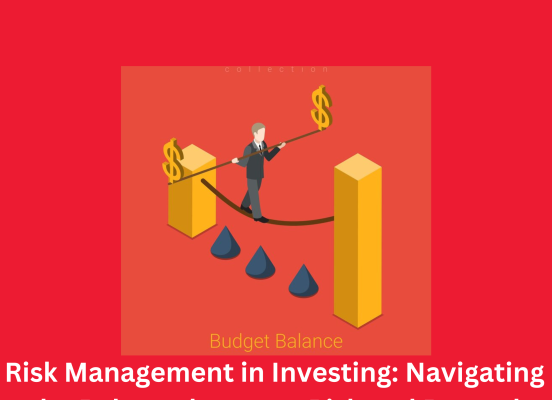

Investing involves risk, and this is the unpredictability of profits related to unique investment options. Whereas there is still higher potential for profits if one opts for higher risks, it is essential that the risk is managed in order to maintain the capital and to achieve long-term financial goals. In this thorough communique, we pass into the concept of danger and go back in investing, in addition to techniques for controlling threat appetite and applying diversification tactics to create investment portfolios which are durable.
Understanding Risk and Reward:
The chance of struggling losses or deviating from anticipated returns in investing operations is referred to as danger. It includes a variety of factors, which includes as dangers precise to a corporation, geopolitical occasions, financial uncertainty, and marketplace volatility. Reward, then again, stands for the viable income or returns that buyers wish to understand from their making an investment activities. The concept that extra danger involves the opportunity of more blessings and vice versa regularly characterises the hyperlink between hazard and reward. In order to maximise their investment outcomes and stay consistent with their risk tolerance and economic dreams, traders want to cautiously do not forget and stability those factors.
Managing Risk Tolerance:
Threat tolerance is the capability and preparedness of an investor to address fluctuations within the cost in their assets with out losing heart or acting hastily. A lot of things influence it, which include psychological make-up, time attitude, monetary recognition, and investment aspirations.
Buyers must in order to manipulate risk tolerance effectively:
1.Assess Personal Financial Situation:
Assess variables such as income, outlays, debt masses, and liquidity necessities to ascertain the ability to face up to funding losses with out endangering sound financial standing.
2.Define Investment Goals:
To be healthy, make each quick-time period and long-term making an investment dreams based on specific lifestyle alternatives in order that one has asset renovation, capital appreciation, profits generation, or retirement planned out.
3.Understand Time Horizon:
When setting investing goals, recall the time horizon. Making an investment goals with longer time horizons typically allow for extra marketplace volatility tolerance and extra possibility for healing from quick-time period losses.
4.Conduct Risk Assessments:
Make precise exams of every body's risk tolerance and choices by way of the usage of the risk evaluation equipment or questionnaires provided by means of investing structures or monetary advisers.
5.Stay Informed and Educated:
To stay calm and think rationally when the market is unstable, keep learning about risk management, market dynamics and investment ideas.
Implementing Diversification Strategies:
Spreading funding money across several asset lessons, industries, geographies, and investment motors is referred to as diversification, and it's far a hazard control strategy used to lessen portfolio volatility and the effect of adverse activities on general returns. Important techniques for diversification include:
1.Asset Allocation:
When it involves making an investment in a number of asset classes including equities, bonds, cash equivalents, and opportunity investments, you will establish a number prices according to the funding period, one’s tolerance to dangers, and the anticipated returns. Optimising chance-adjusted returns and improving portfolio balance may be executed with the resource of balancing exposure to numerous asset sorts.
2.Sector Diversification:
Investing in a variety of industries that technology has revolutionised and taking advantage of economic trends might help mitigate risks connected with specific locations and make the most of global cycles.
3.Geographic Diversification:
Putting your investments in both regional markets will minimize vulnerability to currency fluctuations, local slumps, and political uncertainties. In short, intercontinental dispersion could help you gain access to potential growth paths that are found in third world countries as it is linked less to local markets.
4.Diversification of Investment Vehicles:
In order to achieve diversification in asset class, investment style and risk profile, one needs to have several sources of funding including: stocks, bonds, mutual funds, ETFs, real estate as well as retirement savings.
5.Rebalancing:
In order to adhere to predetermined asset allocations and take into account the changing market, all the time it is necessary for one to periodically reassess and adjust his or her investment portfolios. In order to repair the meant asset mix, rebalancing includes promoting overperforming belongings and redistributing the income to underperforming ones.
When handling funding risks, an investor calls for the comprehension of the change-offs among chance and return. Investors can maneuver thru unsure markets with the aid of assessing their individual hazard tolerance stages, placing clean investment desires and applying diversification strategies thus build robust portfolios able to withstanding numerous financial hardships. The success principle in this case according to Parboteeah (2005) involves ensuring gains exceed risks with reference to Scott (2009) stating that success occurs when one understands tradeoffs between return expectations from an asset portfolio against possible losses while investing in different types of assets such as bonds stocks or real estate among others. Although there may be no making an investment plan that would completely eliminate threat, careful danger control techniques can also minimise bad risks and maximise the threat of long-term economic achievement.